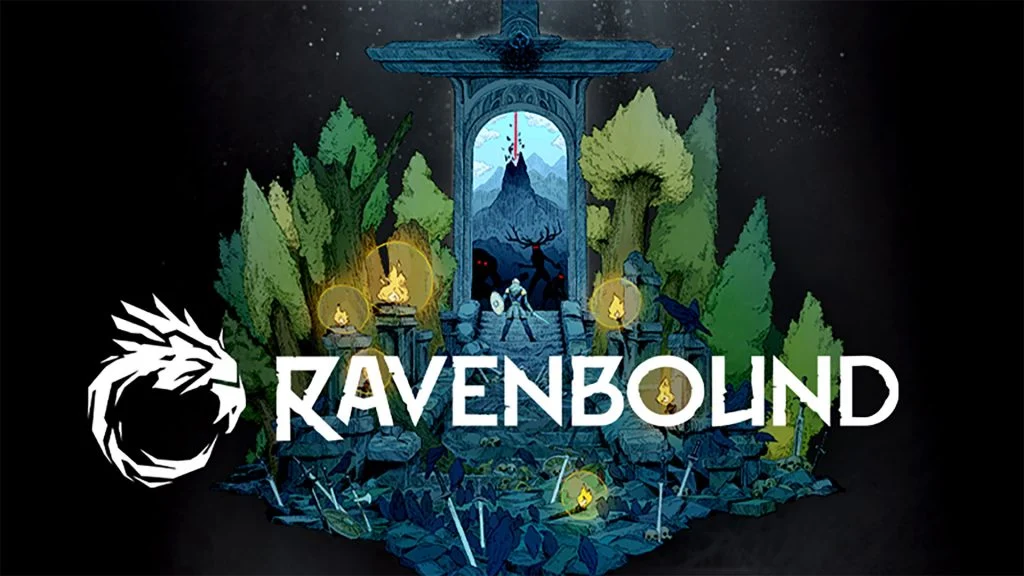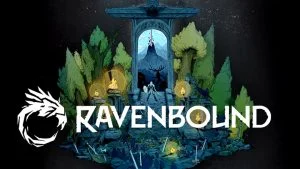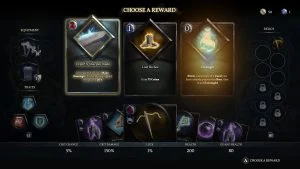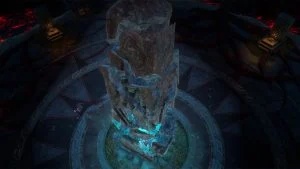Ravenbound is a single-player roguelite action game with soulslike elements where players assume the role of a Vessel. Set against the backdrop of Scandinavian folklore, the game was developed and published by Systemic Reaction and released for PC on March 30, 2023.
I was somewhat torn when writing my review for Ravenbound. On the one hand, the game has a lot of cool and innovative concepts. On the other hand, I saw a lot of issues with it. As someone who has played through some roguelites and the Dark Souls games, I was ready to take on a new indie take on the genres. The final result, however, left me wanting more.
New Mechanics Make the Gameplay Unique but Somewhat Confusing
In Ravenbound, you control what is known as a Vessel, which equates to a body that you use to destroy enemy creatures. The real “character” here is you and the different cards you accumulate throughout your journey.
Cards are a unique mechanic in Ravenbound that controls the player’s weapons, armor, and passive buffs called Relics. When you beat a camp of monsters, they drop what are known as Fragments, which you can Empower to select new, random cards through each playthrough. Players then choose from 1 of 3 cards, modifying their build to their playstyle.
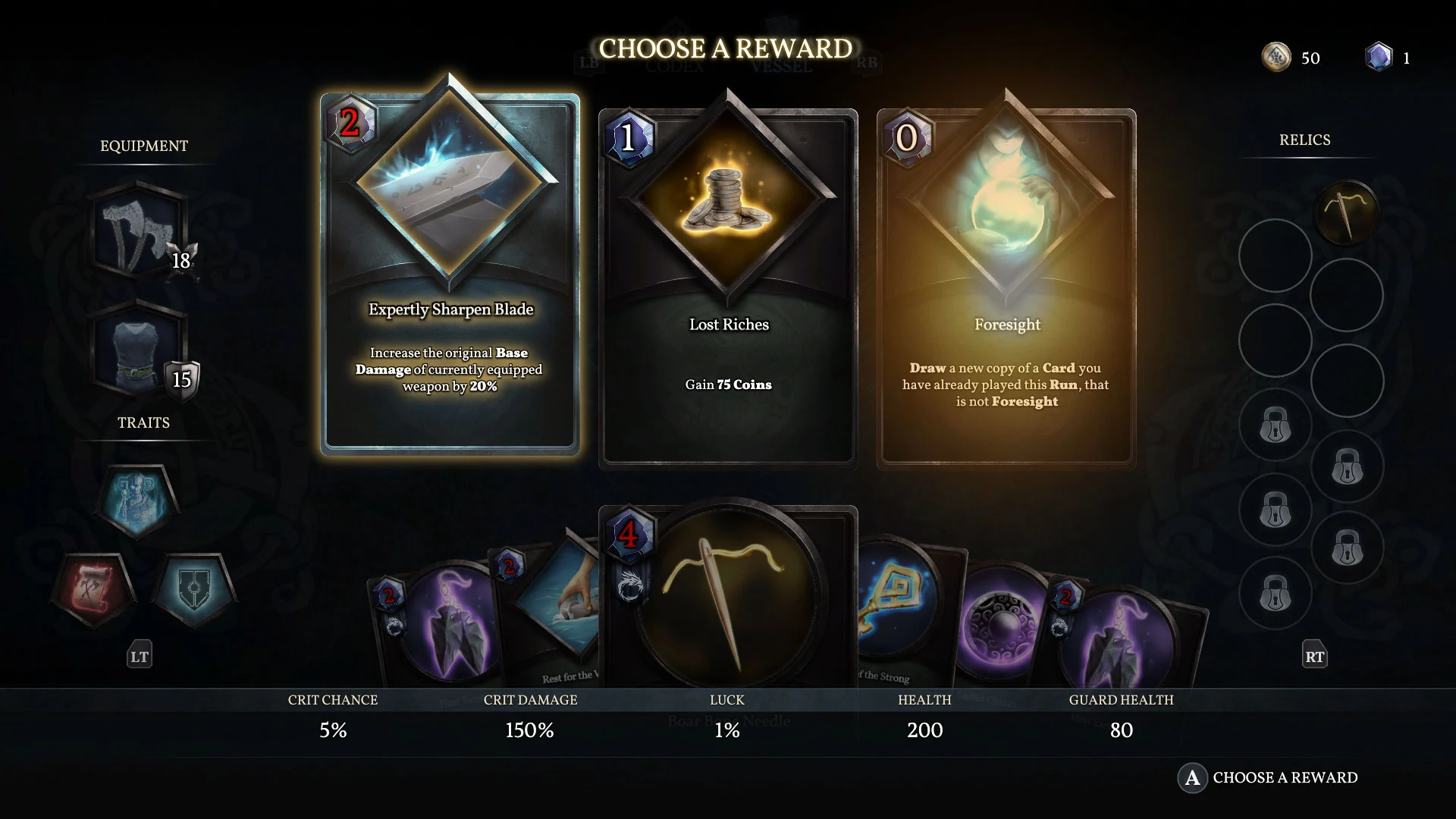
If this sounds somewhat confusing, don’t worry, you’re not alone — I was confused too, and though the in-game tutorial teaches you the basics, It still took me a minute to wrap my head around it all.
In Ravenbound, when you die, your Vessel dies forever, and you need to restart the game. In this way, the title is like a war of attrition, a gauntlet of trying to make it past each increasingly powerful boss.
Each time your Vessel dies, you unlock new, more powerful cards you can roll when Empowering your Fragments through the next playthrough. If you’re not a fan of RNG selecting your gear and abilities, Ravenbound might frustrate you.
Flying is a Blast, the Game Looks and Sounds Great
One of the more random but highly-specific mechanics in the game that I found enjoyable was turning into a raven and flying around. I’m not sure if I just imagined it in my head or if it was true, but it felt like there was physics mechanics behind gaining speed as a bird. Unfortunately, it really has nothing else to do with the gameplay other than getting around.

The game looks and sounds pretty good. While there isn’t any voice acting (something that could enhance the immersion), there are pretty good lighting effects. The world feels expansive, with different biomes, which becomes more apparent when in raven form, and you can look at the landscape in totality. Generally, for an indie title, Ravenbound had pretty decent graphics and audio.
Not Really a Soulslike
It’s obvious why many that watch gameplay footage of Ravenbound would compare it to soulslike games, as the punishing mechanics, blocking, parrying, and dodging all look and feel pretty familiar here. However, it really isn’t soulslike (nor have the developers stated so), and when I first started playing it, I was getting frustrated because I was trying to play it like one.
In Ravenbound, the combat is faster-paced and frenetic.
The Gray Health mechanic makes it so that your character essentially has lifesteal to restore lost health after being hit. This mechanic makes spamming light attacks on a weaker foe — something that might get you killed in an Elden Ring or Dark Souls — more viable than trying to time your parry perfectly. It took me a few Vessels to finally realize this, and as soon as I did, the game got a lot easier for me. In Ravenbound, using your fast dodge and countering with attacks will likely get you far.
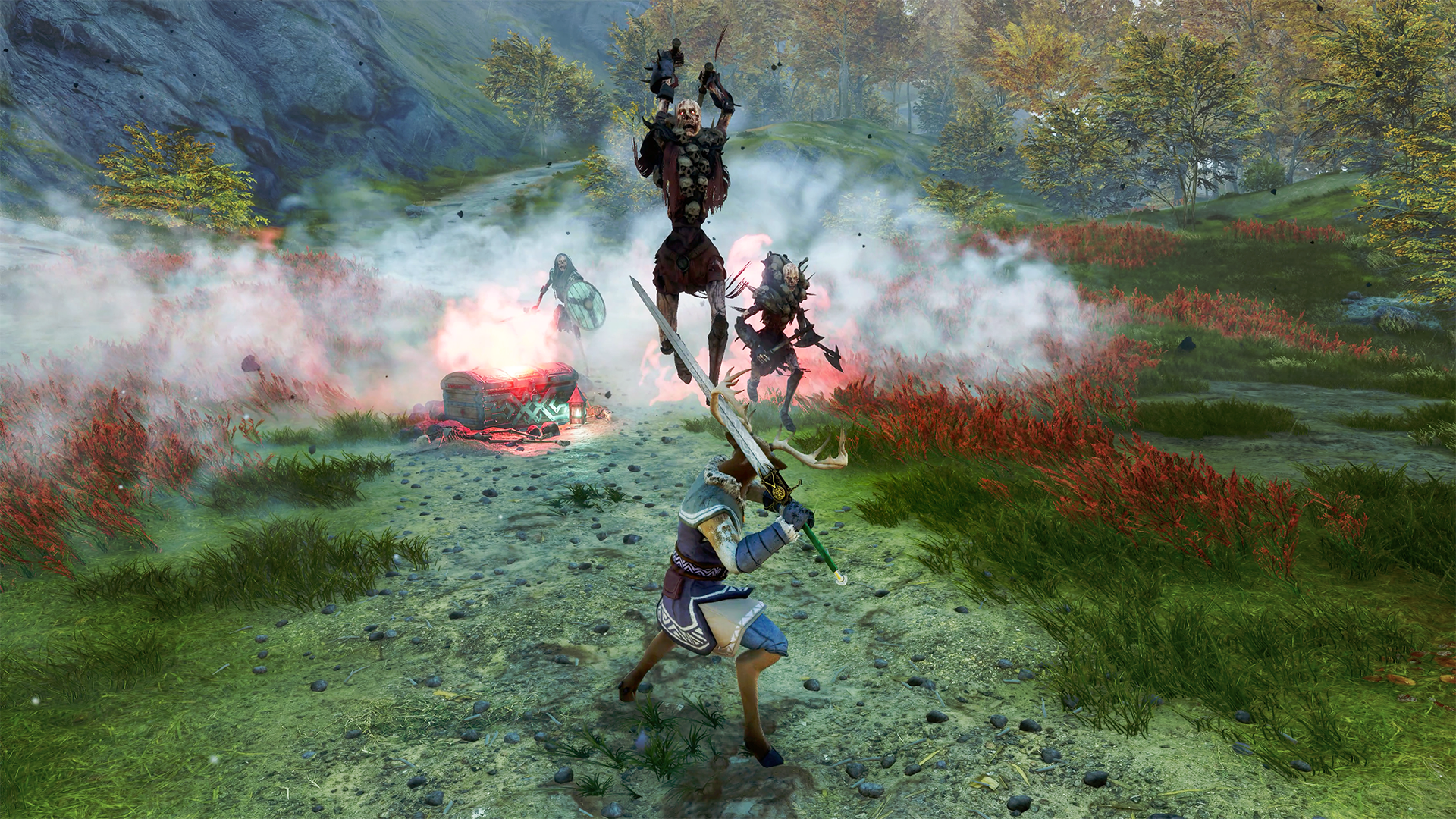
If anything resembles a soulslike game in Ravenbound, it’s probably the boss fights. Huge, lumbering bosses that telegraph their moves and are pretty challenging punctuate the end of each level. This is made more challenging by the death mechanics — since it usually takes a few playthroughs for most people to download the boss’s moves. The mechanics make the process of re-grinding new characters every time you die feel more like a chore than an accomplishment.
Great Ideas with Questionable Execution
Some things make me want to proclaim Ravenbound a good game, but at times I question the decision-making that went into it. For one, the gameplay loop feels pretty repetitive, which is strange considering that the game is procedurally generated with different creatures, vendors, and NPCs through each playthrough.
Where it fails, however, is truly and distinctly differentiating all the different characters in the game. Sure, there are skeletons, tiny goblins with spears, looters, etc. — but ultimately, after playing through a few Vessels, my brain saw “weak monsters, medium monsters, boss monsters” rather than appreciating the fact that these mobs were all different and randomly placed.
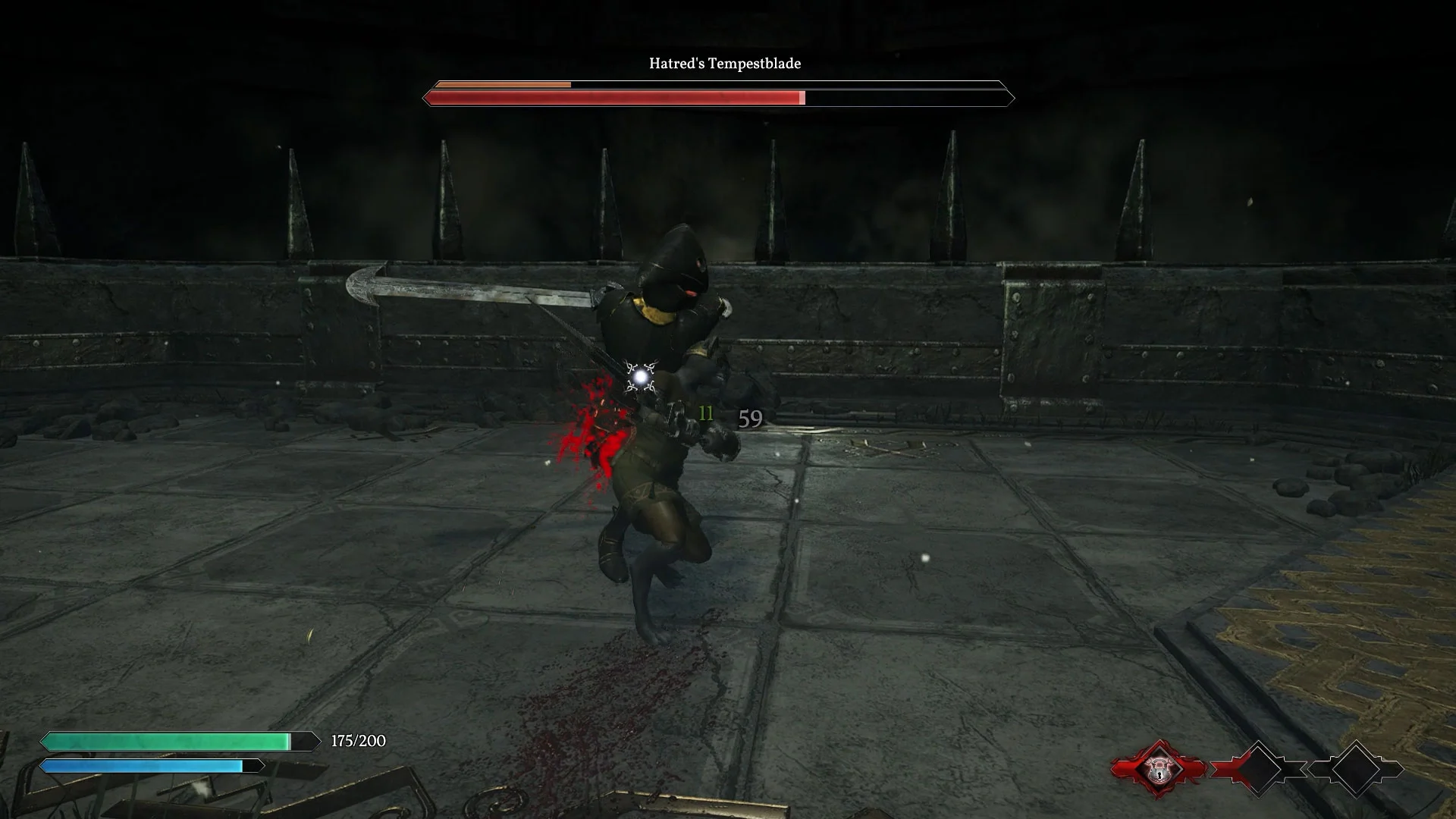
Ultimately, Ravenbound feels like an early-access title that was released as a fully-fledged release. The game crashed a lot for me. Every time a Vessel would die, it was pretty much a 50% toss-up whether my game would close. I didn’t crash as much through the actual gameplay, but when I did, it was pretty infuriating, especially in the heat of battle. NPCs would often just phase into another plane of existence, leaving me to speak to an invisible NPC vendor.
There are some really great and innovative ideas packed in, but the game fails to pull you in enough to really care about them. The pacing falters depending on the skill of players, which is true to other soulslike titles, but without a strong narrative, it reduces the motivation for the player to move forward.
As someone who also likes to play ARPGs, the card concept was pretty cool. The idea of finding build synergies and maximizing damage output based on RNG is a good concept that flips the typical “find this enemy to get this gear” setup on its head, but it’s not enough to save the other problems with the game.
Some Issues can be Fixed with More Detailed Tooltips and Bugfixes
Some nuanced aspects of Ravenbound are punishing the first time around because they are not fully explained. For instance, I wore armor that I buffed with other cards, thinking these buffs would persist if I changed armor. This is not the case, so I swapped out pretty epically strong armor for weak armor just because it was never explained in the game. There are a few other mechanics similar to this that left me scratching my head and somewhat frustrated with the final outcome.
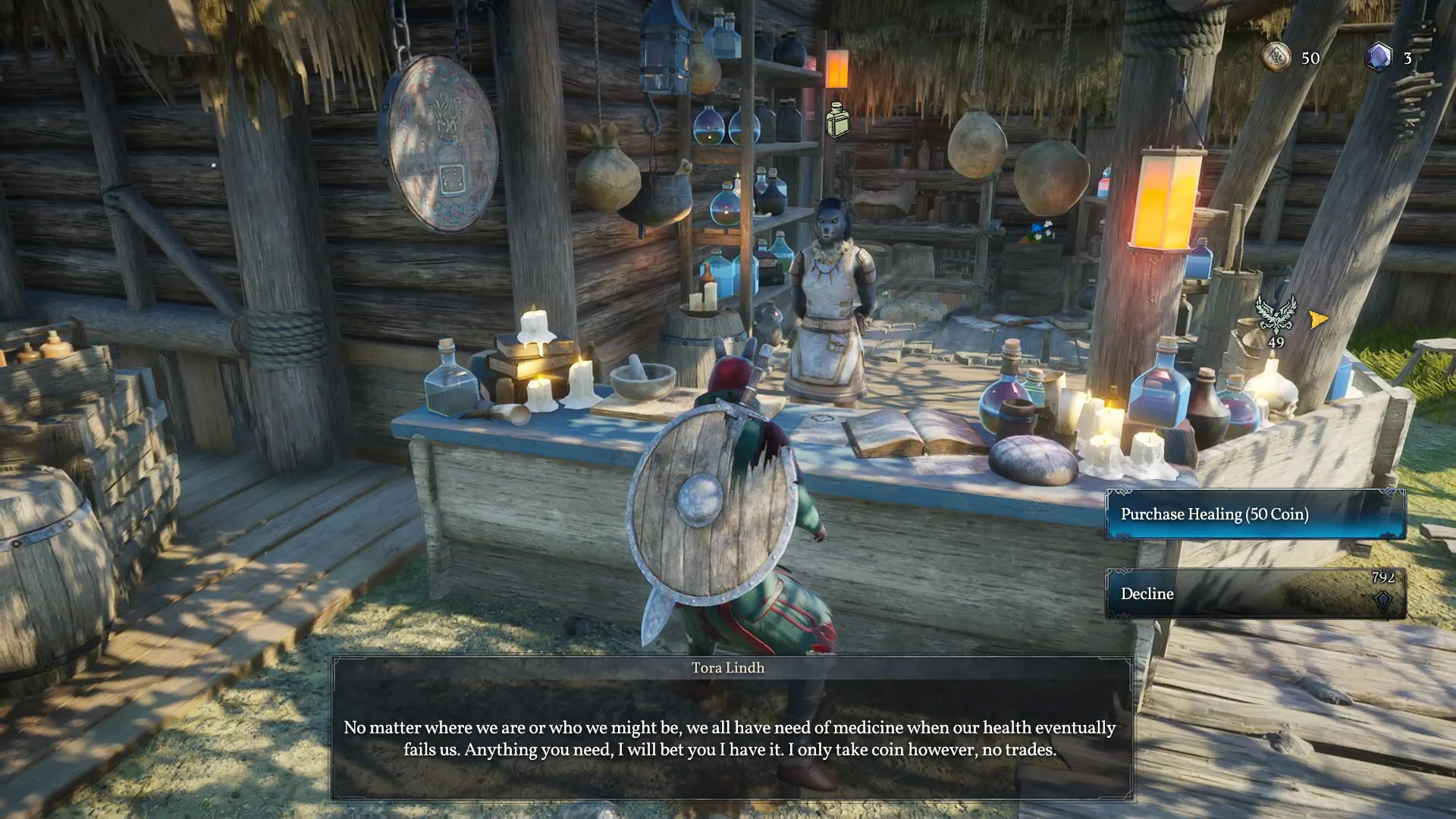
Negative cards and opening red chests are other concepts that I would elaborate on here, but really, it would end up being long-winded and even more confusing. Other decisions, like not having a re-fillable health potion and having to travel back into town every time you need to heal is a weird choice that also hurts the pacing of the game.
Final Verdict
Ravenbound is an interesting indie title with many good ideas but a somewhat steep learning curve. Players that enjoy a challenge and want to play something unlike others in the genre may find the game fun, as it does boast unique mechanics and gameplay ideas that set it apart from other titles. However, it fails to create a compelling narrative, and while innovative, the core gameplay loop feels repetitive and arduous, which is magnified once you make it past the second level.
At a launch price of $30, it’s a decent deal considering how much you can explore, but whether you’ll want to explore it is a different story entirely. Ultimately, it serves as a decent effort for a smaller indie development team but misses the mark of being a fun or addictive experience.
Ravenbound Review
OK
Ravenbound is an interesting indie roguelite with many innovative concepts and a decent foundation that ultimately feels incomplete and misses the mark on creating a fun and addictive experience. While the innovative gameplay loop could work, the sub-par execution creates a moderately fun but ultimately forgettable experience.

